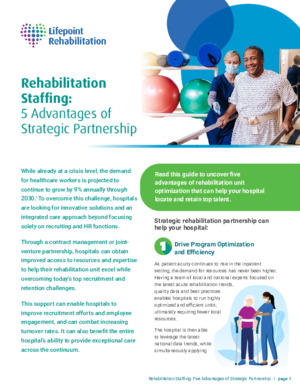The Best Strategy To Use For Narconon Africa
The Best Strategy To Use For Narconon Africa
Blog Article
All about Narconon Africa
Table of ContentsMore About Narconon AfricaThe Ultimate Guide To Narconon AfricaOur Narconon Africa DiariesNarconon Africa Fundamentals ExplainedNarconon Africa Can Be Fun For EveryoneEverything about Narconon AfricaFascination About Narconon Africa
In a series of papers with Manudeep Bhuller and Katrine V. Lken, we conquer these data difficulties and the nonrandomness of imprisonment, supplying brand-new understandings right into how imprisonment affects relapse, employment, children, and criminal networks - Heroin addiction treatment. Figure 1 Our work research studies the effects of imprisonment in Norway, a setting with 2 essential benefitsWe can even more connect this info to various other relative, including kids and brother or sisters. Additionally, we know on co-offending that permits us to map out criminal networks for observed criminal offenses. Second, we can take advantage of the arbitrary assignment of criminal situations to judges that vary in their tendencies to send defendants to jail.
Some courts send accuseds to prison at a high rate, while others are more lax. We measure a court's stringency as the average incarceration rate for all various other situations a judge handles, after managing for court and year set results, which is the degree of random assignment. This quasi-random assignment of judge stringency can be utilized as an instrument for imprisonment, as it strongly forecasts the court's choice in the present situation, however is uncorrelated with various other instance characteristics both by design and empirically.
The Of Narconon Africa
Attributes of detainees, consisting of demographics and criminal offense categories, are broadly comparable in Norway and various other nations, consisting of the United States, with the exceptions that the United States homicide rate is much higher, and race plays a bigger function there. What sticks out as different, especially contrasted with the USA, is the jail system.
Figure 2In Norway, the ordinary time invested in jail is a little over six months, which is comparable to most various other Western European countries. This contrasts with ordinary US prison time of practically three years, which is in huge component the factor the USA is an outlier in its imprisonment price compared with the remainder of the world [Number 1]
The Facts About Narconon Africa Revealed
This offers a lot more separation between minor and hard offenders than exists in the United States. There is no congestion in Norwegian jails and better individual safety and security, with each prisoner being appointed to their own cell and a greater inmate-to-staff ratio than in the United States (https://za.enrollbusiness.com/BusinessProfile/6708867/Narconon%20Africa#). Jails in Norway also offer well-funded education, medicine treatment, mental wellness, and job training programs
Our research study on the results of incarceration on the offender, utilizing the arbitrary project of courts as an instrument, returns 3 essential searchings for. First, jail time inhibits better criminal actions. We find that incarceration lowers the probability that an individual will certainly reoffend within 5 years by 27 percentage points and decreases the equivalent variety of criminal charges per person by 10 costs.
Unknown Facts About Narconon Africa
We find substantial visit the site declines in reoffending probabilities and advancing billed criminal offenses even after offenders are launched from jail. Our 2nd result is that bias due to selection on unobservable individual features, if neglected, leads to the incorrect conclusion that time spent in prison is criminogenic. If we simply contrast criminal offenders imprisoned versus those not sent out to jail, we find favorable associations between incarceration and succeeding crime.
This stands in comparison to our evaluation based on the random task of judges, which locates an opposite-signed outcome. Third, the decrease in criminal offense is driven by people that were not functioning before incarceration. Amongst these people, imprisonment raises involvement in programs routed at boosting employability and minimizing recidivism, and this inevitably elevates employment and incomes while preventing criminal habits.

Imprisonment triggers a 34 percentage factor increase in involvement in job training programs for the previously nonemployed, and within 5 years their employment rate increases by 40 percentage factors. At the exact same time, the possibility of reoffending within 5 years is reduced by 46 percent factors, and there is a decline of 22 in the ordinary number of criminal costs.
The 7-Minute Rule for Narconon Africa

A probable explanation for the distinction is that Norway's prison system varies noticeably, both in terms of prison-term length and jail conditions, from the US prison system. While recognizing the impacts of imprisonment on the wrongdoer is a vital very first step, recording spillover impacts is also vital for assessing criminal justice policy and making efficient prison systems.
The 5-Minute Rule for Narconon Africa

Common the very least squares approximates reveal that kids of incarcerated papas are 1 percentage point more probable to be charged with a criminal activity, relative to a mean of 13 percent, and show no impact on school grades. Using our judge stringency instrument, we discover no analytical proof that a daddy's imprisonment affects a child's own criminal offense or college qualities, yet we are not able to rule out modest-sized impacts.
Narconon Africa - The Facts
We specify criminal groups based upon network web links to previous criminal situations. Our analysis returns 3 primary searchings for. First, when a criminal network member is incarcerated, their peers' likelihood of being charged with a future criminal activity lowers by 51 portion factors over the next four years. Also, having an older sibling jailed decreases the probability his younger brother will certainly be charged with a criminal activity by 32 percent factors over the next four years.
Report this page